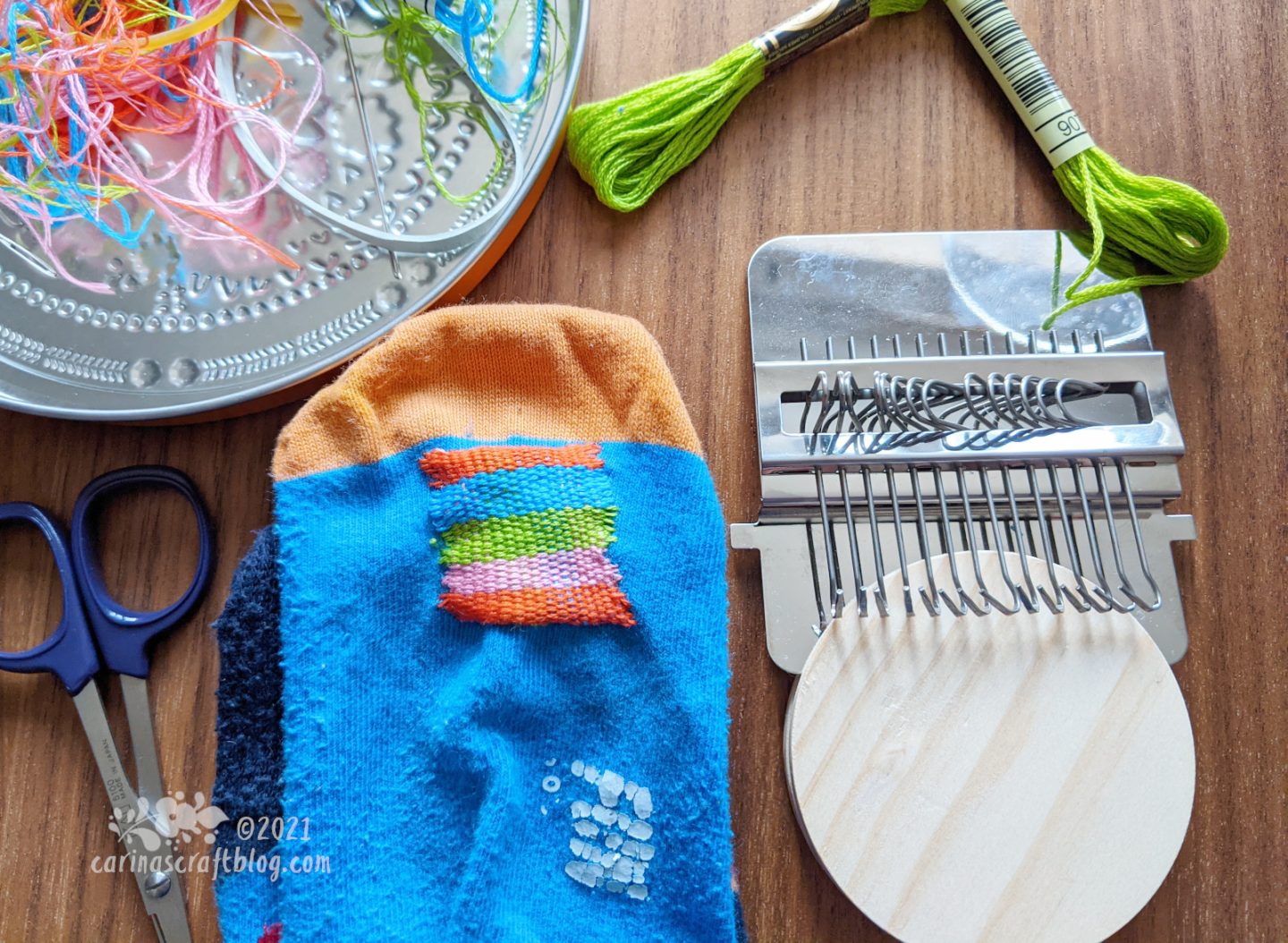
Darning one of Tony’s socks using a new tool in the darning tool box. A darning loom. Sometimes called a Speed Weve because that was a well known brand back in the day.
It is a really nifty tool. I will show how to use one of these in the darning workshop on Sunday. Sign up here for the Darning for Knitwear workshop. Most of the techniques can can be used for other types of fabric besides knits.
You do not need a darning loom for the workshop! You don’t even need a darning mushroom (although I do recommend that you have one), you can use a small jam or condiment jar in stead.

Here you can properly see what the loom looks like. I really like using it. It speeds up part of the process of doing woven darns, and makes it a bit easier too. The one thing I’m liking less about it is that there are a lot more ends to weave in. Look at the top photo. So. Many. Ends. :-)
Next I really want to experiment with making fancy woven patterns in the darns.
These socks are store bought (I don’t know how to knit socks!) and they are totally worth mending. One mended pair of socks is one less pair that you have to buy, and one less pair that ends up in a landfill. Darning and mending our clothes, and of the people in our lives, is an act of care. Care for our possessions and care for the planet. And it says that you care about the person, whose socks or t-shirt or jeans you are mending, that you are willing to spend your precious time caring for their possessions too.
And darning adds history and meaning to the garments. Those socks I really thought were beyond repair are still in my sock drawer. Every time I see them or wear them, it makes me smile. I fixed that!
Mending our clothes gives us agency. With darning and mending we take control of how long our clothes will last. We can stem the tide of the planned obsolescence of our clothes. We don’t have to buy-buy-buy, we can fix things.
The socks from Tesco are worth darning, the top from Primark is worth mending, the sweater from M&S is worth mending.
